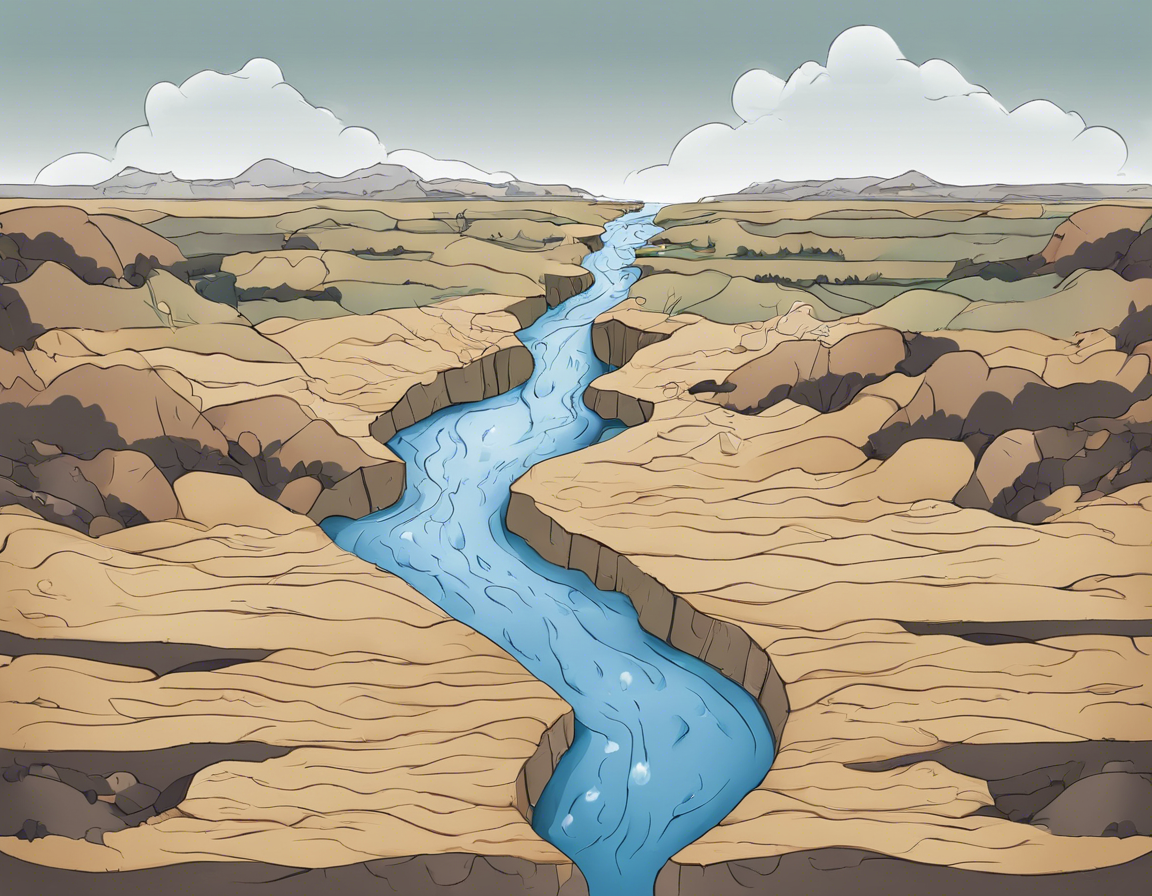When it comes to understanding the concept of watershed divides, it is essential to delve into the intricacies of how water flows across the land and how the topography plays a vital role in defining the boundaries of watersheds. In this comprehensive guide, we will explore watershed divides in detail, with examples to help grasp this fundamental geographic principle.
What is a Watershed Divide?
A watershed refers to an area of land where all the water that falls within it, drains off into a single larger body of water, such as a river, lake, or ocean. Within a watershed, there are watershed divides, also known as ridgelines or water partings. These are elevated areas that separate one watershed from another, determining the direction in which water flows.
How Watershed Divides Work
Imagine a mountaintop where rain falls. The water then flows down the slopes in various directions. The ridgeline running along the mountaintop acts as a watershed divide, ensuring that the water that falls on one side of the mountain flows into one river, while the water that falls on the other side flows into a different river. This division is crucial in defining the boundaries of different watersheds.
Importance of Watershed Divides
Watershed divides are essential in determining the flow of water, which impacts the quality and quantity of water in a particular area. They play a significant role in defining the boundaries of watersheds, which in turn influence the ecosystems, biodiversity, and human activities within those areas. Understanding watershed divides is crucial for effective water resource management and conservation efforts.
Examples of Watershed Divides
-
Continental Divide: One of the most famous examples of a watershed divide is the Continental Divide in North America. This ridge runs along the Rocky Mountains, determining whether water flows east towards the Atlantic Ocean or west towards the Pacific Ocean.
-
Great Divide: In Australia, the Great Divide serves as a watershed divide between the rivers that flow towards the east coast into the Pacific Ocean and those that flow inland towards the interior.
-
European Watershed: In Europe, the European Watershed stretches from Portugal to Russia, separating the rivers that flow towards the Atlantic Ocean, the Mediterranean Sea, the North Sea, and the Arctic Ocean.
Managing Watersheds and Divides
Effective management of watersheds and watershed divides is crucial for maintaining water quality, managing floods, and preserving ecosystems. Conservation efforts that focus on protecting these natural boundaries can help safeguard water resources for future generations. Understanding the interconnectedness of watersheds and the role of divides is essential for sustainable water management practices.
Conservation Practices for Watershed Protection
-
Riparian Buffers: Planting trees and vegetation along waterways can help prevent soil erosion, filter pollutants, and provide habitat for wildlife.
-
Soil Conservation: Practices such as contour plowing, terracing, and cover cropping can help prevent sediment runoff and maintain soil health within watersheds.
-
Stormwater Management: Implementing green infrastructure solutions like rain gardens and permeable pavements can help reduce stormwater runoff and improve water quality.
-
Community Engagement: Educating and involving local communities in watershed conservation efforts can lead to more sustainable practices and increased awareness of the importance of watershed protection.
Frequently Asked Questions (FAQs)
Q: What is the difference between a watershed and a watershed divide?
A: A watershed refers to the area of land where all the water drains into a single body of water, while a watershed divide is an elevated boundary separating one watershed from another based on the direction of water flow.
Q: How do human activities impact watershed divides?
A: Human activities such as deforestation, urbanization, and pollution can disrupt natural watershed divides, leading to altered water flow patterns and degradation of water quality.
Q: Can watershed divides change over time?
A: Yes, natural events like erosion, landslides, and earthquakes can alter the location of watershed divides, impacting the flow of water within a watershed.
Q: Why are watershed divides important for biodiversity?
A: Watershed divides determine the flow of water, which in turn influences the distribution of habitats and resources for diverse plant and animal species within a watershed.
Q: How can we protect watershed divides?
A: Implementing land conservation measures, promoting sustainable land use practices, and supporting watershed restoration efforts are key strategies for protecting watershed divides.
In conclusion, understanding watershed divides is essential for recognizing the interconnected nature of water systems and the impact of human activities on these vital natural boundaries. By appreciating the significance of watershed divides and implementing conservation practices, we can work towards preserving water resources and promoting sustainable environmental stewardship.
